Cataracts are a common vision condition you’ve likely heard of. In fact, it’s very likely you even know someone who’s been diagnosed with them, or has had surgery to remove them. It’s estimated that up to 90% of people over the age of 80 will experience cataracts. In Canada, more than 350,000 cataract-related surgeries are performed each year, and it’s estimated that about 2.5 million people are living with cataracts at some level. In the United States, it’s estimated up to 20.5 million people. 😳
In this blog post, we’ll learn more about what cataracts are, what causes them, and what treatments are available to treat them, so you can be aware of your options should you or a loved one be diagnosed. Remember: cataracts are common and treatable. Regular exams with your optometrist are your best preventative move.
Let’s get into it.
So what are they?
Cataracts are cloudy areas in the lens of your eye. The lens is the clear, curved tissue at the front of your eye, behind your pupil, that filters entry of light (not to be confused with the cornea, which is the clear, curved structure at the very front of your eye, protecting your iris, pupil and lens). Light enters your eye through your pupil, and the lens then filters it for projection onto your retina, where the images of your vision are formed. When this lens begins to cloud, it affects clarity of vision and the access of light to your eye. Think of it like trying to see through a dirty window.
Cataracts can form in one eye or both, remain small or spread across the lens, leading to partial or even complete vision loss. Because cataracts can happen gradually, without regular eye exams we may not notice their development right away, until we realise we’re struggling to see clearly, even with glasses.

What Causes Cataracts?
There are a few reasons cataracts may begin to form in our eyes, but the most common factor is usually, simply, age. The proteins found in our lens (also called crystallins) begin to break down and even clump together as we get older. These clumps eventually become cloudy areas we refer to as cataracts. The risk for cataracts starts to increase over the age of 40, and significantly after the age of the 60. Diabetes may accelerate symptoms. They’re also more common in women, according to studies. Yay.
Types of Cataracts
As mentioned above, age-related cataracts are most common. There are three main types:
- Cortical Cataracts – These form in the space around the centre of your lens, known as the cortex.
- Nuclear Sclerotic Cataract – These form in the centre of the lens, known as the nucleus.
- Posterior Subcapsular Cataract – These form at the back of the lens, in the area of the cortex just beneath the lens capsule (the outer membrane that protects the lens itself).
It’s possible to experience more than one of these types of cataracts at the same time, simply because cloudy patches can form in multiple areas of the lens.
Besides age-related cataracts, there are a few other types that carry their own different causes:
- Paediatric Cataracts – These affect babies and children. This type is typically hereditary, though it can also occur due to ocular injury or other eye conditions. Babies can be born with them (also called congenital cataracts), or they can form following birth. It’s important that paediatric cataracts are treated early, to avoid the child developing further ocular issues such as amblyopia (lazy eye).
- Secondary Cataracts – Also known as posterior capsular opacification, these cataracts occur when cloudy patches begin to form in the lens capsule (the membrane that covers the lens). It’s actually a common side effect of cataract surgery, but is easily treatable.
- Traumatic Cataracts – No cataract situation is a fun situation, but these are the least fun of all. As you can guess, these cataracts occur following trauma (injury) to the eye. Direct blunt impact with the eye can cause a cataract to form immediately or shortly afterward, and penetrating injuries (where the cornea is pierced and the offending object is able to reach the lens as well) almost always cause an immediate cataract, if they don’t rupture the lens entirely. Treatment for traumatic cataracts is tricky and complicated, simply because the cataract itself is rarely the only thing needing repair. (We cannot stress enough the importance of protecting your eyes. If you play sports, read this blog post. If you work anywhere that isn’t a desk, read this blog post. You’re welcome.)
Other Causes of Cataracts
Age may be the most common culprit for us, but there are other factors that can encourage the development of cataracts:
- Air pollution
- Alcohol
- Corticosteroids (also known as steroids, these are anti-inflammatory drugs used to treat conditions such as lupus, rheumatoid arthritis, or vasculitis)
- Diabetes
- Existing eye diseases, such as retinitis pigmentosa or uveitis
- Family history of cataracts
- Glaucoma surgery
- High blood sugar
- Industrial chemical exposure
- Long-term exposure to UV light (particularly from the Sun—this post details how to properly protect yourself from the risks of UV light)
- Pesticides
- Radiation therapy to the upper body
- Tobacco smoke

Cataract Treatment
A comprehensive eye exam with an optometrist or ophthalmologist is the best way to detect the onset of cataracts. The sooner they’re detected, the better your treatment options will be.
Cataracts can’t be reversed once they’ve started to form. The only way to remove them is with surgery. Surgery may not be necessary immediately, but there will come a time when your glasses aren’t clearing your vision enough and your quality of life begins to get affected (such as performing daily tasks or driving, especially at night). That’s when your doctor will begin talking about a referral for surgery. Cataract removal is very common and completely safe, but your doctor will make you aware of potential risks, just as with any surgical procedure.
Cataract surgery is performed by an ophthalmologist and involves removing the lens of your eye and replacing it with an artificial one, known as an intraocular lens (IOL). This artificial lens can significantly improve your quality of vision, and remains in your eye permanently. Because this new clear lens properly refracts light entering your eye, you will very likely find yourself needing a lower prescription in your glasses or contacts, if you need one at all anymore.
Cataract post-op recovery is easy, but it’s important that you follow your doctor’s careful instructions. Many patients go home within the hour following the procedure. They’re given eye drop instructions, and directions to avoid getting anything (including soap and water) in their eyes, to avoid rubbing their eyes (some patients are given special glasses or eye shields to discourage contact), and when their first follow up appointment will be (these are usually scheduled with the patient’s optometrist). Full recovery usually takes anywhere from four to eight weeks, and the follow-up appointments will reveal when a patient is safe to return to daily activities such as driving and exercise.
Cataracts in Animals
Yes, even Fluffy may be susceptible to cataracts. Like many human diseases and conditions, they do develop in animals. Some vets have reported that cataracts tend to appear more often in dogs and horses than cats, but they can develop in pretty much any animal on the planet. Some cases found that cataracts in pet reptiles, such as snakes and lizards, may have developed due to excessively-close proximity to heat lamps. In many wildlife cases, trauma or injury to the eye, or another underlying ocular disease (such as glaucoma) was believed to be the trigger. While underlying diseases may be the culprit for our domesticated companions, age usually remains the most common cause (we’ll get into causes for humans in the next section).
Happy Eyes
In other, fascinating news, in 2023 six elderly penguins at a Singapore zoo (three king penguins aged 20 years and older, and three Humboldt penguins aged 7 to 13 years) underwent successful cataract surgery. The king penguins were each fitted with custom intraocular lenses (IOLs) made in Germany, a development process that took two months to get the designs right. The king penguins’ eyes were large enough to have the stability needed to effectively “hold” the new lenses following the procedure. The zoo reported they’d noticed the elderly penguins struggling to move about, and a cloudiness had begun to form in their eyes. The surgeries were scheduled as a way to improve their quality of life at the zoo.
Lovely.

Final Thoughts
On this blog I talk a lot about how taking care of your vision is the best way to maintain your ability to collect clear memories of the important and joyful moments in your life. Age-related disease often takes its toll, but sometimes we have another chance at clarity. The advances of optical technology and ophthalmic procedures allows us to restore our vision and extend our ability to collect those clear memories. As someone who’s had successful vision correction surgery, I can say wholeheartedly that it’s a life-changing process that I’m very grateful for.
Wishing you all the best in wherever your path takes you today,
Sydney
Sydney Gallant, CCOA
Virtual Clinic Assistant
Shelburne Optometry










